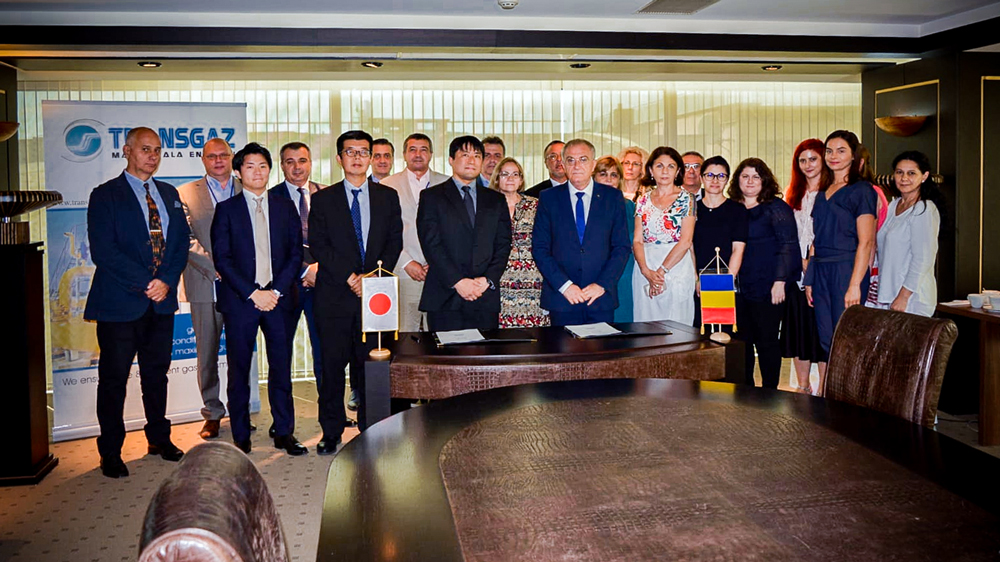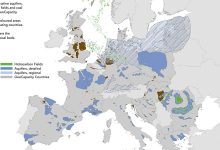Transgaz and Itochu to Collaborate for Important Projects in the Gas Sector
Transgaz and Japan’s Itochu Corporation have signed a Memorandum of Understanding (MoU) for collaboration regarding major projects in the gas sector. Thus, the agreement lays the foundations of cooperation for the development of projects in the gas infrastructure sector in Europe. With a two-year validity, the document was signed given Transgaz’s intention to expand its activity in the European energy infrastructure sector, as well as the fact that Itochu has the experience and capacity to assess and develop performing infrastructure projects in terms of environmental protection in Europe’s gas sector. Romgaz will also join the agreement.
On signing the Memorandum, Itochu was represented by Tetsuji Yoshizawa – General Manager; Tatsuya Daike – Manager Plant Project Department, Hyonjin Cho – Plant Project Department and Calin Sireteanu – Itochu Romania. On behalf of Transgaz, along with General Manager Ion Sterian, the company’s executive management also participated in the event.
“The Memorandum between Transgaz and Japanese Corporation Itochu allows us to have access to major European gas infrastructure projects, to financing and investments in the chemical, petrochemical and energy fields, having alongside an important partner, with a very good reputation, with plenty of experience and the capacity to assess and develop these projects. It is also a recognition of Transgaz’s performance in the development of major projects, since famous international corporations decide to partner us,” Ion Sterian said.
Regarding the potential opportunities of cooperation that can be jointly developed by Transgaz, Itochu and Romgaz (after the latter joins the MoU), they aim at discussions about international projects such as the LNG Terminal in Alexandroupolis, White Stream pipeline, the LNG terminal in Krk, as well as national energy projects, cogeneration plants, chemical and petrochemical plants. At the same time, collaboration between the operator of the national gas transmission system, Transgaz, and Japan’s Itochu will focus on activities for the development of the gas transmission infrastructure at national level in order to connect all local communities to the gas network, thus creating the necessary prerequisites for increasing the quality of life of Romanians and sustainable economic development.
The main international projects in data and figures
- LNG Terminal in Alexandroupolis
The LNG terminal project in Alexandroupolis includes an offshore floating unit for LNG reception, storage and regasification, and a submarine system and an onshore gas transmission pipeline, through which natural gas is transported to the Greek national gas system and then to end-consumers.
There is also the ability to connect and transport gas to other gas transmission systems that are planned in the same geographic region, such as TAP (Trans Adriatic Pipeline).
The Alexandroupolis project will create a fourth gate for gas imports in Greece, with a delivery capacity of 700,000 cubic meters of natural gas per hour or 6.1 billion cubic meters of natural gas per year and a storage capacity of up to 170,000 cubic meters of LNG.
- White Stream pipeline
The pipeline has the objective of gas delivery from the Caspian basin and Central Asia via Azerbaijan and Georgia, then crossing the Black Sea to South-Eastern Europe. White Stream gas pipeline is a new infrastructure crossing the Black Sea. It will carry Turkmen gas through the second line of the Trans-Caspian Pipeline (TCP), directly to Romania and other EU Member States. This gas could reach the Caspian coast in Azerbaijan and be transported to the Georgian Black Sea coast through the expanded South Caucasus Pipeline (SCP) from Georgia, later reaching the White Stream pipeline and following to reach the EU at the terminal in Constanta. From there, gas can be transported through the existing infrastructure to Ukraine, Slovakia and the Czech Republic and further to countries in Central and Northern Europe.
- Krk LNG Terminal
The project refers to the construction of an LNG terminal on the island of Krk, in Croatia. The selected geographical position allows Europe to access gas through CEGH Baumgarten. However, the primary markets are those in Central and South-Eastern Europe, as they can be accessed either by CEGH Baumgarten, or by the gas transmission system in Croatia. The island of Krk is located in the northern part of the Adriatic Sea. LNG carriers will reach the Gulf of Rijeka and will leave between the Istrian peninsula and the island of Cres. The location of the LNG terminal is in the northern part of the island of Krk, in the industrial area. Initially, the capacity of the Krk LNG terminal will be limited to the capacity of the transmission system, which should be 300,000 Nm3/h or 2.6 billion cubic meters of natural gas per year. Croatia’s gas transmission operator Plinacro plans additional investment for pipelines and compressors, which would increase the capacity of the transmission system to 800,000 Nm3/h, after 2020.
- Monitoring, Maintenance & Operation of gas pipelines (MMO)
Itochu will present to Transgaz the best practices for the monitoring, maintenance & operation of gas pipelines.







